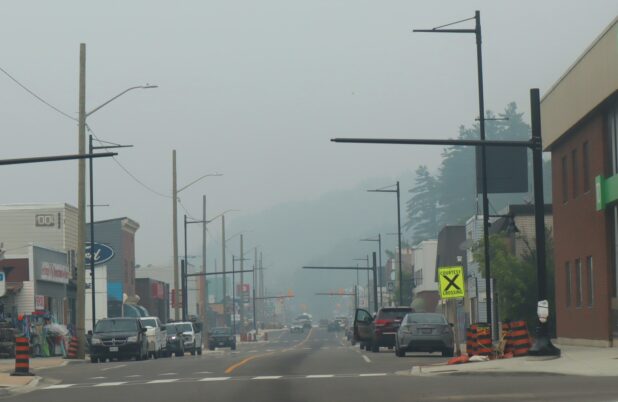Commentary
Local smoke
June 27, 2023

By Nate Smelle
June is a very special month in Ontario. It is when the trilliums bloom, the birds and the turtles nest, and the frogs sing from dusk till dawn. It is the time of year, when our provincial ecosystem, fully awakens, and begins to flourish. As part of nature, like the wild ones living in the forests, fields, and wetlands, we humans are designed to celebrate the arrival of the summer season.
As biological beings interconnected with and sustained by our environment, we feel the seasons calling to us loudest as they transition from one into the next. Catching a glimpse of a shooting star, smelling the scent of wildflowers on the breeze, listening to the symphony of bird songs resonating from the trees, stirs up our senses. This awareness of the moment not only reminds us what time of year it is, it also invites us to acknowledge our place within the natural world.
Unlike in many parts of the province, living in Ontario’s cottage country we are still fortunate enough to experience these seasonal sensorial delights. Nevertheless, our planet is heating and the climate is changing, therefore the quality of life we have been here in North Hastings is also transforming. While we can’t predict exactly how our living conditions will be altered, climate models project that we will certainly continue to experience more extreme weather events in the coming years.
A few weeks ago when I first noticed the words “local smoke” appearing in our daily weather report, I started paying closer attention to the quality of air entering my lungs. While people living in big cities and densely populated urban areas are used to keeping an eye on air quality, since moving here more than 16 years ago I have given little thought to the air I breathe. In fact, the only time it has entered my mind has been when driving south to visit family or friends. Breathing in the contaminated air that typically hovers over Hamilton, Oakville and most of the Greater Toronto Area, always reminds me of how truly “fresh” the air is here living amongst the trees.
For as long as I have lived here, our clean air has been somewhat of a source of pride for me. Along with the natural beauty of our area, the high quality of our air is most often one of the first things my city-dwelling loved ones notice when they come to visit. Well, as long as local smoke remains in our daily weather forecast, we have one less essential ingredient in the recipe nourishing our previously richer quality of life.
With the intention of working outside in the garden on Sunday, June 25, I stepped out onto my front porch ready to sweat. That was at least until I took my first breath. Breathing in the smog I had mistaken for an early morning mist, I could taste the smoke in the air. As I stood there for a moment literally tasting the climate emergency that I have been covering for more than a decade now, I decided to head back indoors to check the morning news to see if there were any new wildfires that had been sparked nearby.
For the second time in the past two weeks my plans for the day changed when I heard the meteorologist declare, “There will be local smoke in the atmosphere again today, so outdoor activities are not recommended. People with chronic respiratory conditions are especially vulnerable to the toxins in the wildfire smoke and are advised to remain indoors. The smoke can cause or worsen respiratory disease, heart attacks, strokes, and even death.”
Based on data in the Canadian National Forestry Database an average of over 2.1 million hectares of forests and wildlands are burned up each year during the wildfire season. As of press time on Tuesday, June 27 Canada surpassed the record for area burned by wildfires in single year with more than 7,612,900 hectares (76,129 square kilometres) already consumed by the flames this season. To put this in perspective, the Town of Bancroft is 227.54 square kilometres in size, while the entire GTA, including the City of Toronto and the regional municipalities of Durham, Halton, Peel, and York is 7,124 square kilometres. Considering the wildfire season in Canada typically lasts until late August, we must heed the warnings from our local fire departments and respect the “Total Fire Bans” in place if we intend to get these fires under control. As disappointing as this is, especially for those visiting the area who have been looking forward to sitting around a bonfire with their friends or family, it is the new reality we are are being forced to deal with because of our inaction on the climate emergency.
As our world continues to change we will do our best to adapt to our degraded living conditions. At the same time, we will also have to come to terms with loss and collateral damage … in this case, the beloved campfire and the lifelong memories they tend to ignite.


















